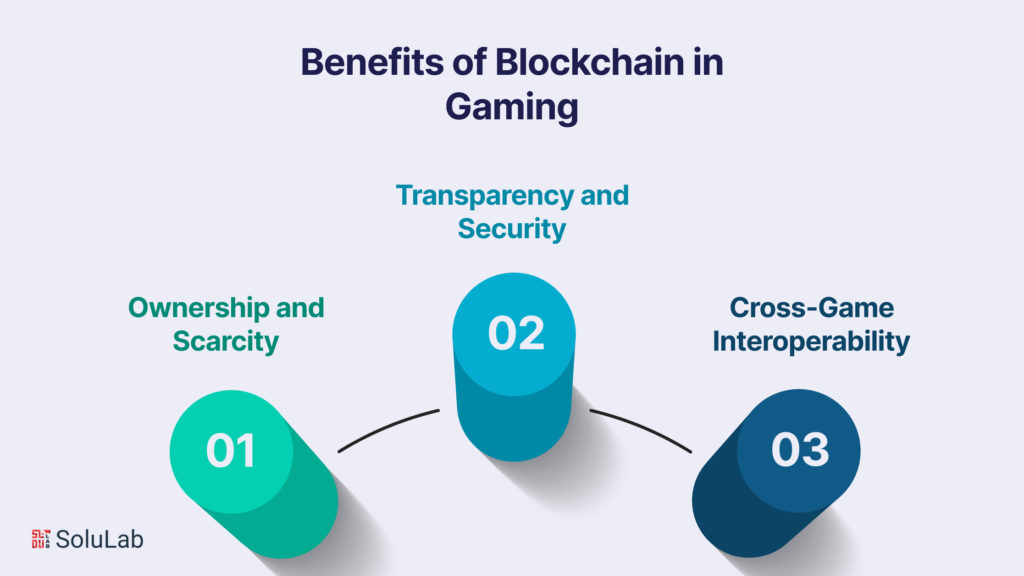BD Help Zone
Your go-to source for insightful news and information.
Game On! Why Crypto Game Interoperability is the Next Big Play
Discover why crypto game interoperability is set to revolutionize the gaming world. Don't miss out on the next big play—dive in now!
Understanding Crypto Game Interoperability: A Comprehensive Guide
Crypto game interoperability refers to the ability of various blockchain-based games to interact with one another, allowing players to utilize their in-game assets across different gaming platforms. This concept is crucial for creating a more connected gaming ecosystem where players can transfer their digital assets, such as NFTs, from one game to another seamlessly. As blockchain technology continues to evolve, developers are increasingly focusing on implementing interoperability features in their games, making it essential for gamers and investors to understand its significance.
One of the main benefits of crypto game interoperability is the liquid market it creates for in-game assets. Players can trade, sell, or use their items across multiple games, enhancing the overall value and longevity of their investments. Moreover, interoperability fosters community engagement as players from different games can collaborate or compete, leading to a richer gaming experience. Understanding these dynamics is vital for anyone looking to navigate the rapidly changing landscape of blockchain gaming and to leverage the potential of interconnected ecosystems.

Counter-Strike is a highly popular tactical first-person shooter game that has captivated players with its intense team-based gameplay. Players can choose between two teams, terrorists and counter-terrorists, to compete in various objective-based scenarios. To enhance your gaming experience, don't forget to check out the bc.game promo code for exclusive in-game benefits!
The Future of Gaming: How Interoperable Crypto Assets Will Change the Landscape
As we venture into the future of gaming, interoperable crypto assets are set to revolutionize the landscape, providing players with unprecedented freedom and ownership over their digital assets. Unlike traditional gaming environments, where items and currencies are often confined within a specific game, interoperability allows players to transfer assets across multiple platforms. This means that a rare sword won in one game could be utilized in another, giving it real value beyond the confines of a single title. As the blockchain technology underlying these assets matures, we can expect to see a proliferation of games designed to harness this capability, leading to an engaging and interconnected gaming universe.
The rise of interoperable crypto assets also signifies a shift in how developers approach game design. Instead of creating isolated ecosystems, developers are now incentivized to collaborate and create shared spaces where players can interact. This could lead to innovative business models, such as revenue sharing based on the use of assets across different games. Furthermore, players will be empowered not just as consumers, but as stakeholders in the gaming economy, influencing the direction of game development through their ownership of in-game assets. Ultimately, as interoperability becomes a standard practice, we can anticipate a gaming landscape that is more dynamic, inclusive, and economically vibrant.
Why Players Should Care About Crypto Game Interoperability: Opportunities and Challenges
In the rapidly evolving landscape of the gaming industry, crypto game interoperability has emerged as a pivotal topic for both developers and players. Interoperability allows players to use in-game assets across different games and platforms, enhancing the overall gaming experience. This seamless integration not only expands the utility of digital assets, such as characters, skins, and tokens, but also fosters a vibrant player-driven economy. For example, imagine earning a rare sword in one game that can also be used in another game, creating a richer narrative and gameplay experience. As players become increasingly invested in their digital identities and assets, crypto game interoperability represents a critical shift towards more dynamic and connected gameplay.
However, while the opportunities presented by crypto game interoperability are substantial, they also come with their own set of challenges. One of the primary concerns is the technical complexity involved in enabling true interoperability; different blockchain systems may have varying standards and protocols. Furthermore, questions surrounding ownership, security, and regulatory compliance play a significant role in this conversation. Players must also consider the potential for fluctuating asset values across different games, which could impact their investments.Thus, as the industry navigates these challenges, it's essential for players to stay informed and engaged, as their participation will shape the future of gaming in the blockchain era.